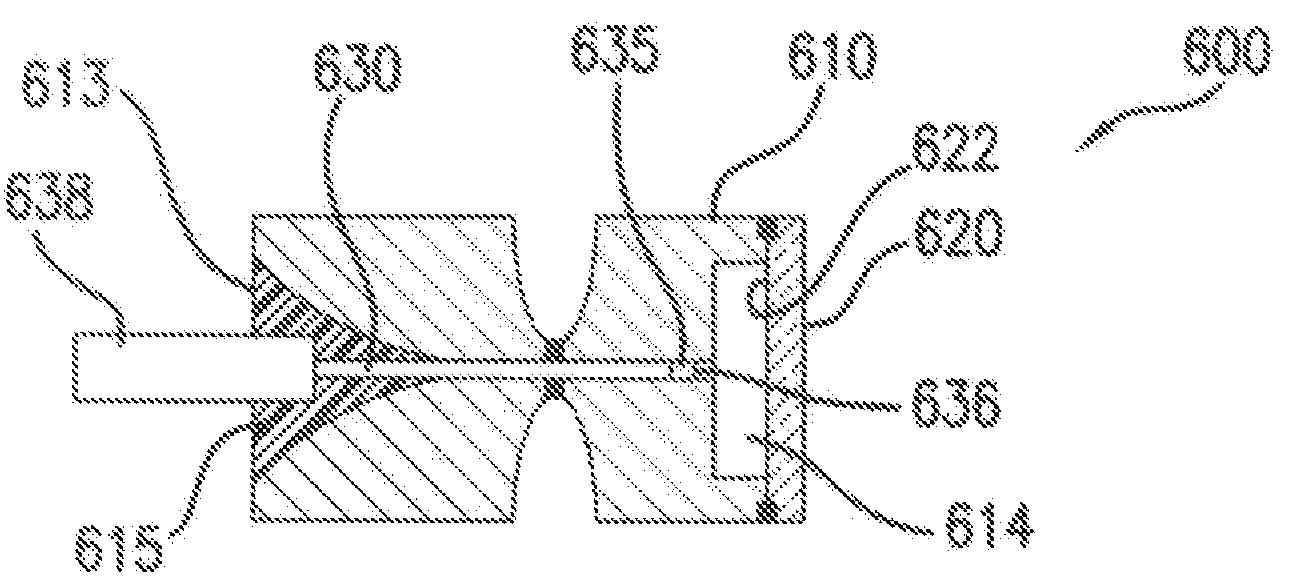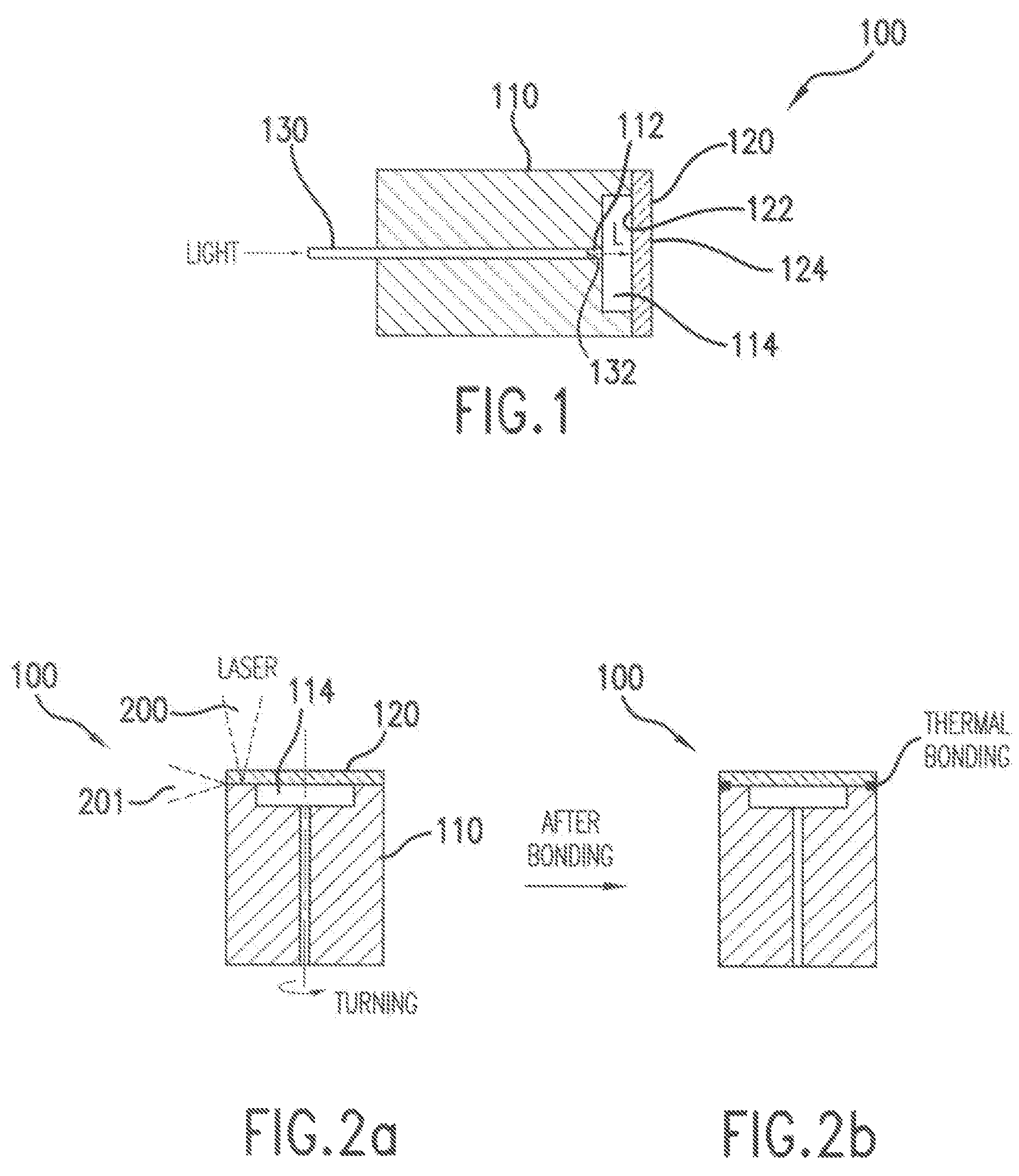Optical fiber sensors for harsh environments
a fiber optic sensor and harsh environment technology, applied in the field of optical sensors, can solve the problems of observing interference changing the cavity, corresponding changes in the interference pattern between the two reflections, etc., and achieve the effect of reducing or eliminating the temperature dependence of the sensor
- Summary
- Abstract
- Description
- Claims
- Application Information
AI Technical Summary
Benefits of technology
Problems solved by technology
Method used
Image
Examples
Embodiment Construction
[0020]The present invention will be discussed with reference to preferred embodiments of diaphragm sensors. Specific details are set forth in order to provide a thorough understanding of the present invention. The preferred embodiments discussed herein should not be understood to limit the invention. Furthermore, for ease of understanding, certain method steps are delineated as separate steps; however, these steps should not be construed as necessarily distinct nor order dependent in their performance.
[0021]A cross sectional view of a diaphragm sensor 100 according to one embodiment of the invention is illustrated in FIG. 1. The sensor includes a ferrule 110 in which a central bore 112 is formed. A pit, or recess, 114 is formed in one end of the ferrule 110. A diaphragm 120 is attached to the ferrule 110 to cover the pit 114. An optical fiber 130 is disposed within the central bore 112. The ferrule 110, diaphragm 120 and optical fiber 130 may be formed from a wide variety of materia...
PUM
 Login to View More
Login to View More Abstract
Description
Claims
Application Information
 Login to View More
Login to View More - R&D
- Intellectual Property
- Life Sciences
- Materials
- Tech Scout
- Unparalleled Data Quality
- Higher Quality Content
- 60% Fewer Hallucinations
Browse by: Latest US Patents, China's latest patents, Technical Efficacy Thesaurus, Application Domain, Technology Topic, Popular Technical Reports.
© 2025 PatSnap. All rights reserved.Legal|Privacy policy|Modern Slavery Act Transparency Statement|Sitemap|About US| Contact US: help@patsnap.com



